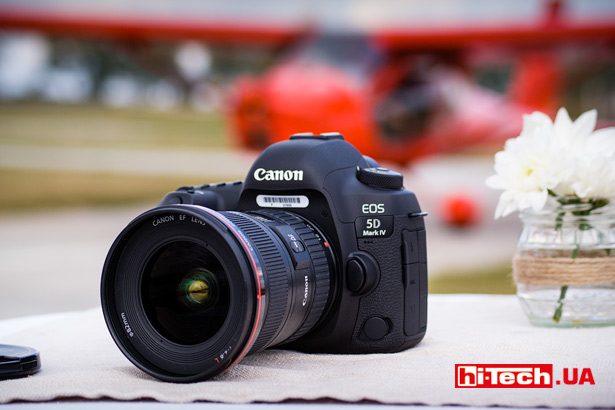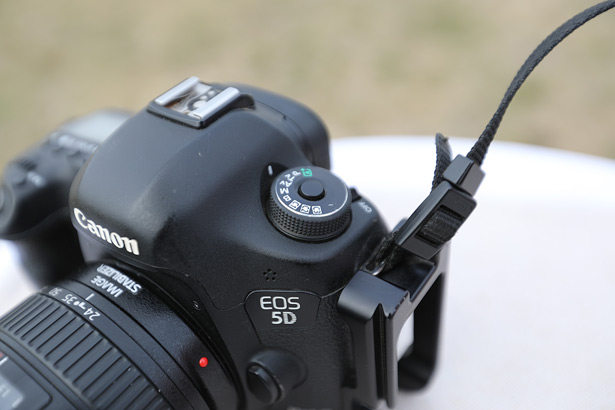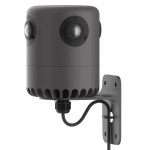Dual Pixel RAW technology in the Canon EOS 5D Mark IV camera. Is there any benefit?
04.11.16
DSLR camera announced in August Canon EOS 5D Mark IV has received a number of improvements compared to its predecessor. However, most of the improvements for this class of camera were quite expected, and the improvements themselves can be called evolutionary.
It’s already quite difficult to come across something fundamentally new in SLR cameras, but Canon still managed to surprise photographers a little.
Dual Pixel RAW technology is truly something absolutely unprecedented, and it has never been seen in cameras before.
What kind of technology is this and what can it be used for?
Many modern Canon system cameras use light-receiving matrices, where each pixel consists of two separate photodiodes A and B, information from which is read separately. This separate reading allows you to implement fast phase focusing Dual Pixel AF using the matrix itself.
Due to this, Canon DSLR cameras provide high-speed autofocus when shooting video and when shooting using the viewing screen (LiveView).
Typically, when taking a picture, information from photodiodes A and B of each pixel is combined, but the Canon EOS 5D Mark IV also includes the additional ability to record files in a special Dual Pixel RAW format.
Dual Pixel RAW files contain two “images”. The first image is formed based on information from photodiodes A, and the second is based on combining information from photodiodes A and B. It turns out that parallax information is added to a regular frame.
This allows you to micro-adjust autofocus, shift bokeh (the blur pattern in the out-of-focus area of the frame), and reduce stray flare. And all these operations are carried out already on the filmed frame!
In theory, everything looks very interesting, but let’s try Dual Pixel RAW in practice.
How to use Dual Pixel RAW?
Currently, Dual Pixel RAW is only available on the Canon EOS 5D Mark IV. To obtain RAW files in the Dual Pixel RAW format, you must activate the corresponding setting in the menu.
In this case, some not very pleasant features arise:
- Dual Pixel RAW file size is almost double the size (approximately 60 MB versus 35 MB for regular RAW files);
- reduced burst speed;
- Continuous shooting will not be available in LiveView mode;
- There may be an increase in noise in the image.
Also a very important point when working with Dual Pixel RAW RAW files is that additional functionality of the format is provided only in the proprietary Digital Photo Professional (DPP) editor.
And when using, for example, the popular Adobe Lightroom application or the Adobe Camera Raw RAW converter, Dual Pixel RAW files will open (if the latest versions of the applications are installed), but working with them will not be functionally different from working with regular RAW files. You will not receive any additional features.
At least, this is the situation at the moment.
To get more effect from manipulating Dual Pixel RAW, the manufacturer provides a number of recommendations. They boil down to ensuring that when shooting, a shallow depth of field (DOF) and significant background blur are provided.
For Dual Pixel RAW files, the Digital Photo Professional editor provides a special processing mode, which actually performs micro-adjustment of focus, bokeh shift and highlight suppression.
Shift the focus point
Having experimented with several files, I have to say that the effect of the focus adjustment is so minimal that it is very difficult to notice it. Yes, at 100% magnification some effect of the sliders is visible, but it is very minor and is unlikely to provide any real benefit to the photographer.
- Photo without editing (100% zoom)
- Shifts the focus area as far forward as possible (100% zoom)
- Shifts the focus area as far back as possible (100% zoom)
Frankly, I expected a little more. If you expect to shift focus from one eye to the other in a portrait photo (unless the eyes will be at almost the same distance in relation to the camera), select the desired object in a macro photo, “transfer sharpness” from one area to another in a product photo, then this not the case. Focus adjustment is truly microscopic.
Bokeh adjustment
When adjusting the bokeh shift, the blur zone pattern itself does not change. The resulting effect in the photo can be compared to what you would get by moving the camera slightly to the right or left relative to the original shooting point.
The effect on the final image of the adjustment is negligible.
- Photo without editing
- Shift bokeh to the left as far as possible
- Shift bokeh to the right
Reducing stray light
It was not possible to check the reduction of stray light in Dual Pixel RAW. The fact is that the camera was used for just a few minutes within presentation of the Canon EOS 5D Mark IV in Ukraine, and among the images received I simply did not have a suitable frame with backlight.
It should be noted that adjusting the backlight greatly affects the bokeh. Moreover, the impact is negative. Unpleasant ghosting of objects appears in the frame in the out-of-focus zone. Apparently, it’s not for nothing that in this mode you can select the zone in the photo to which the effect will be applied. By the way, the zone selection in the photo is also provided for adjusting the bokeh shift.
- Photo without editing
- When flare reduction is activated, objects in the out-of-focus zone begin to appear double
Judging by the results obtained, I dare to suggest that Dual Pixel RAW will not be in great demand. Few people will put up with the shortcomings (see above) and inconveniences (using DPP) that arise when working with Dual Pixel RAW, because using Dual Pixel RAW technology does not provide any significant benefit to the photographer.
It’s nice that photographic equipment manufacturers add new interesting features for their equipment, but in this case, the expectations associated with the capabilities of Dual Pixel RAW turned out to be somewhat too high.
Engineer of the Test Laboratory
Don't miss interesting news
Subscribe to our channels and read announcements of high-tech news, tes
Oppo A6 Pro smartphone review: ambitious

Creating new mid-range smartphones is no easy task. Manufacturers have to balance performance, camera capabilities, displays, and the overall cost impact of each component. How the new Oppo A6 Pro balances these factors is discussed in our review.
Editor’s Choice 2025. Best devices of the year by hi-tech.ua

The best gaming laptops, mice for work, gaming keyboards, smartphones, and wireless headphones of 2025. Among them, we will highlight the most interesting ones and those that we can recommend buying.
Leaderboard manufacturer Luminar declared bankruptcy after conflict with Volvo business car Volvo
As part of the procedure, Luminar intends to sell its core LED manufacturing business and has also agreed to sell its semiconductor subsidiary.
Counterpoint: Smartphone prices will rise in 2026 due to memory shortages analytics research smartphone
According to a new forecast from Counterpoint Research, global smartphone shipments will decline by 2.1% in 2026.








